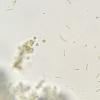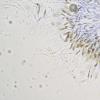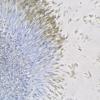
28-12-2025 12:08
Margot en Geert VullingsThis possible Karstenia was found on the bark of d

21-12-2025 21:32
Pol DebaenstHello, Garden, Burgweg 19, Veurne, BelgiumOn 10/1

26-12-2025 21:19
Arnold BüschlenPithyella chalaudii Priou. Ist als Bryoparasit in

21-12-2025 09:32
Hello.A tiny ascomycete found embedded in wood in

18-12-2025 21:17
Pol DebaenstThe identification took me to Byssonectria deformi

24-12-2025 17:08
Hulda Caroline HolteHello, I have found this propoloid ascomycete on
Eutypa or Diatrype sp on Salix
Watt John,
05-09-2017 12:27
Some texts disagree on presence of paraphyses in some of these species.
I had a look at the Salix associated species on this website but didn't seem to be one of those.
Not even quite sure whether it be Eutypa or Diatrype though it does look like Diatrype bullata, but for the paraphyses.
I do understand there is some fluidity amongst the taxonomy of this group.
John Watt
Ormskirk,
England



